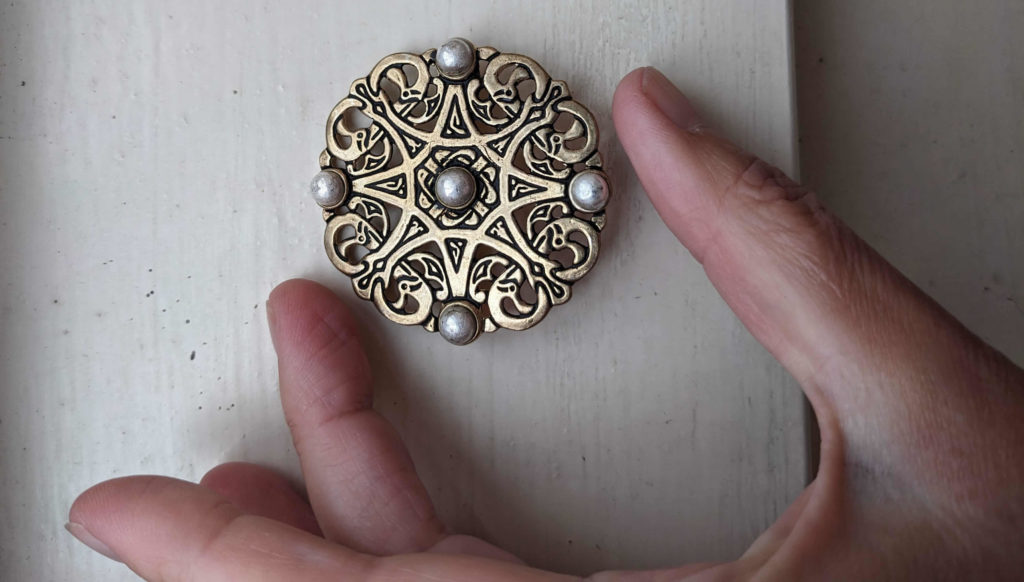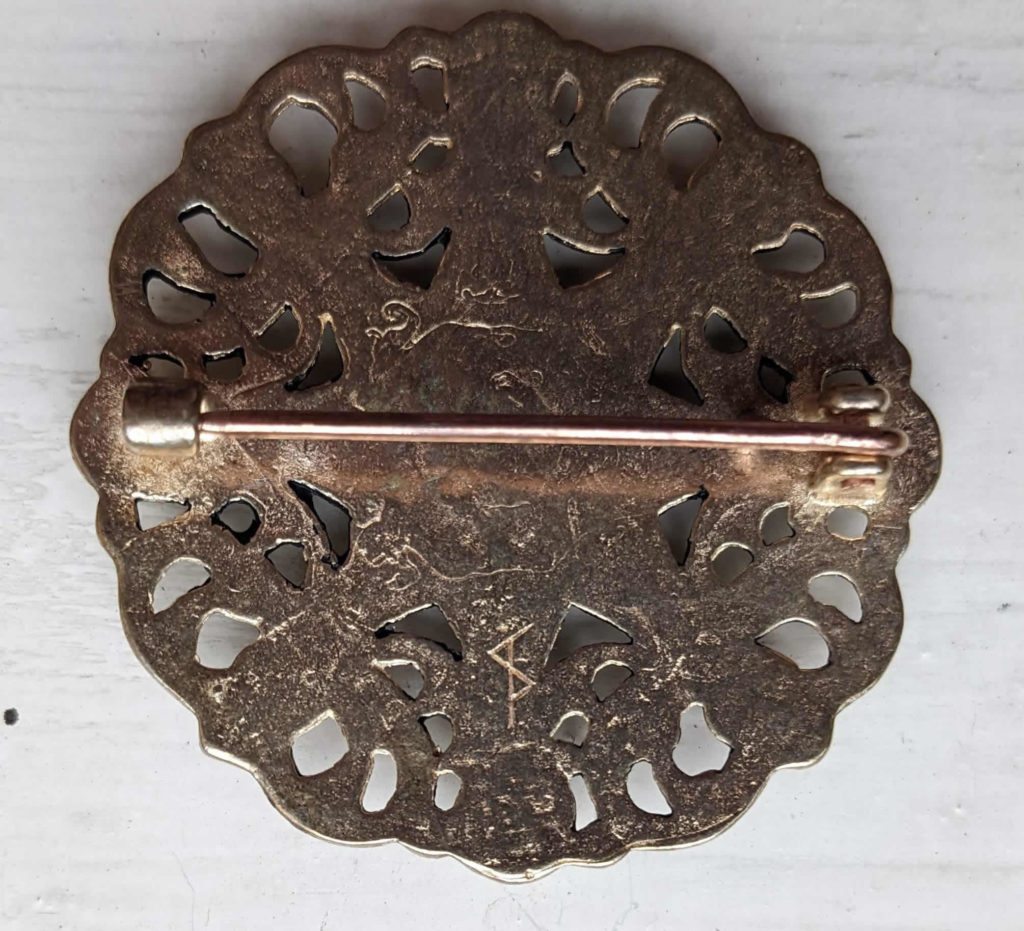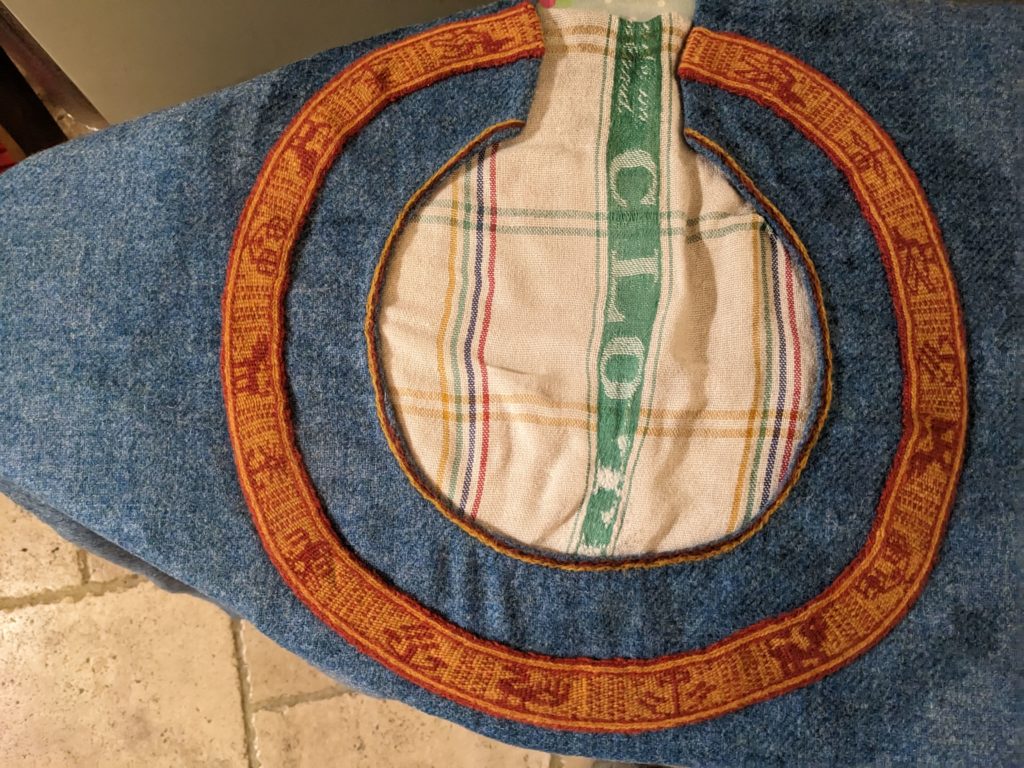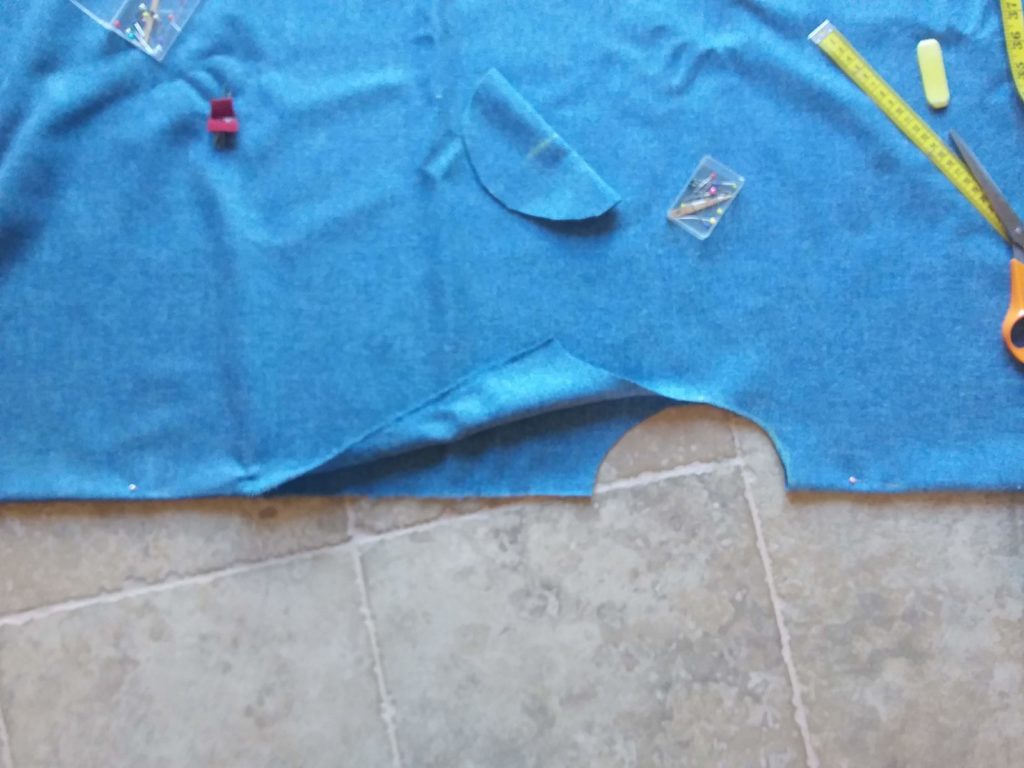You remember the COVID-19 lockdowns in the UK, back in 2020 – 2021? No? I guess you’re too young…well I won’t bore you with oldster ramblings about pulling together or wartime spirit or any of that rubbish and anyway by the time you read this sadly there will be new and worse crises. But honestly at the time it was rather a big deal and ONE of my challenges was to try to help people buy starter re-enactment kit when everything was closed. There were lots of good online shops and retailers doing mail order, but there seemed to be few offerings of good Anglo-Saxon jewellery, especially from the later, Christian period. Everyone wants to be a Viking. There were a few nice little disc brooches available but the selection was seriously limited, compared with reproductions of Viking finds.
Now scroll forward a couple of years…and there are some exciting new options available. I recently bought myself a super brooch about 5 cm across, based on a find acquired by the British Museum in 2020. The brooch is part of a hoard registered as 2020,8004.1-6 (BEP). The hoard was found at Marbury in Cheshire by Martin Tobitt and includes parts of a similar but slightly larger brooch.
The original disc brooch is made of cast openwork silver, inlaid with niello, and with five riveted bosses as extra decoration. The openwork design with stylised creatures is in the late Anglo-Saxon ‘Trewhiddle’ style and is dated to 9th or early 10 century CE.
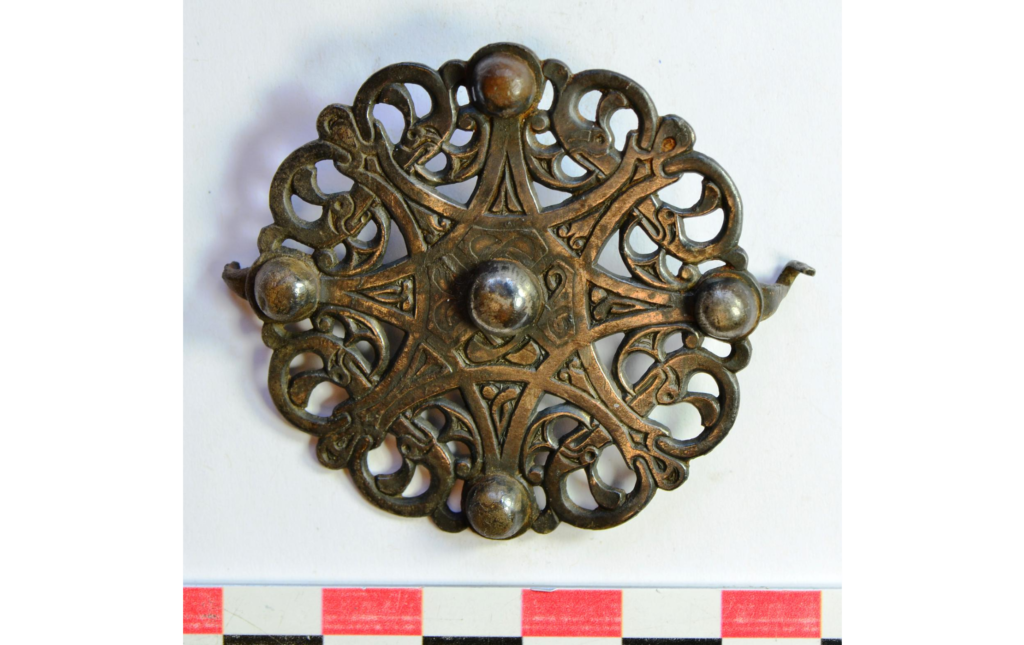

I include extracts from the curator’s comments below:
…part of an expanding group of 9th century early-medieval brooches that are broadly characterised by their openwork, cross based form, often decorated with Trewhiddle-style decoration enhanced with the use of niello.
There are currently 15 examples known to the author, 12 of which are silver, the remaining being gilt copper-alloy. Most take the form of an expanded-armed cross with second cross set at 45 degrees; the three brooches described here are the first examples where the crosses are instead formed of concave-sided lozenges.
This brooch hoard fits with the pattern of deposition seen in the corpus of Type 16 brooches. For example other hoards with multiple brooches of this type include the Galloway Hoard (National Museum Scotland), the South Norfolk Hoard (Norwich Castle Museum), and the Beeston Tor hoard (British Museum). These brooches are usually found in the east of England. However, these three, and an example from Nannerch, Wales (PAS LVPL-30A793), and the Galloway hoard further north, now create an interesting North West group, perhaps suggestive Viking activity.
Non-destructive X-ray fluorescence analysis of the surface of brooch 1 and one the fragments, indicated silver contents of approximately 94-97%, the rest being mostly copper, with traces of other elements.
I find the curator’s comment about the items being usually found in the East of England confusing, as the style is named for a hoard from Trewhiddle in Cornwall which is as West as it gets in the UK!
I bought my replica from the wonderful Northern Traders in Spain. Their website includes a link to the original find – bless them! So I can add the brooch to my early 10th century outfit with confidence. Trewhiddle-style items have been found in a number of places including Abingdon, Cornwall (the eponymous Trewhiddle) and Norfolk (Pentney), so I’m happy that my abbess near the borders of Mercia and Wessex could have a fancy piece in this style.
These disc brooches generally have a fairly light-weight pin, as do the equal armed brooches, and I am not sure how good they would be at fastening a shoulder-slung rectangular cloak of heavy material; I think that penanular brooches are better for this purpose. However, the disc brooch is ideal for fastening a circular or semi-circular mantle, as worn by Anglo-Saxon women.
My replica is of copper alloy (bronze) and the five “bosses” have been glued or soldered on, not riveted. The bosses are lightly silver plated so the brooch closely resembles the current appearance of the original brooch; if I wanted to be super authentic I could silver plate the whole thing? But I like it fine as is, and it’s great to see a wider variety of Anglo-Saxon replicas for sale, most especially as this is a recent find with a recorded location!
